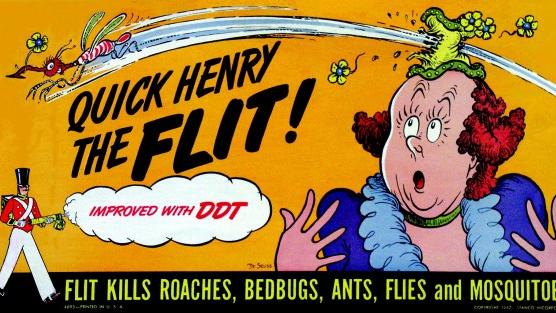
Back in the day, we used to run an intermittent series called Penis Friday, also known as TGIPF. It involved things like banana slug sex and deep sea squid sex. Then #metoo happened, and we kind of lost our taste for it. But bed bugs are on the rise around the world, and you, Dear Reader, have a right to know about the kind of weird sex that’s happening in your own bed.
You see, the female bedbug has a perfectly good genital tract, but the male bedbug has never been observed to use it. Instead, about five times per feeding, the female has to submit to a horrific process called ‘traumatic insemination’. It involves a needle-like organ piercing its cuticle and inseminating directly into her body cavity.
This is unpleasant for her, as evidenced by the fact that more bedbug sex leads to shorter lifespans for the female and reduced egg productivity. She has to spend a bunch of energy repairing the hole in her front and mounting an immune defense against all the microbes that came in with the needle. (See Brooke Borel’s previous post for photos you can never unsee). Furthermore, though she has a spermalege compartment to sequester the sperm, sometimes the male misses and causes ‘water stress’ in her system.
The males aren’t picky when it comes to sticking their hardened intromittent modified paramere where it’s not welcome. They often try it on with other males or freshly-hatched nymphs, whereupon the victims send out an alarm pheromone to ward him off. One bedbug species with a skewed sex ratio seems to have found it necessary to evolve a male spermalege to catch the ejaculate from accidental inseminations.
Why do you need to know this, and why now, you may ask? Because since the 1990s, bedbugs have quietly started taking over the world. With us since the dawn of humanity when we slept in bedbug-infested bat caves, and observed in relics from the age of the Pharaohs, bedbugs were even present on The Mayflower. Pliny the Elder described a bedbug cocktail that could be ingested to cure snakebite. But Cimex lectularius and its tropical brother Cimex hemipterus were all but defeated following World War II when DDT became widely available.
Secretly, though, they were hanging out in reservoirs of human poverty and mounting an evolutionary resistance to pesticides. Your grandfather’s bedbug is a different creature from the one who lurks under your mattress. Yours has a thicker skin to slow the penetration of DDT. It produces enzymes that break down pesticides. And it has another trick up its sleeve.
DDT works by jamming open sodium channels in nerve membranes to flood the cell with sodium, depolarize it, and paralyse the bug. Sprayed on wallpaper, it can last as a dry deposit and keep killing bedbugs and their nymphs up to three years later. But the vast majority of the modern bedbugs analyzed in this study had at least one mutation in the section of DNA that codes for voltage-gated sodium channels, substituting an amino acid sequence that eliminates the affinity of the insecticide to its target site on the nerve cell.
In other words, bedbugs are now largely immune to the best weapon we have at our disposal. They are a strong contender for the superbug of the 21st Century. Revenue for bedbug pest control in the United States is expected to reach $1 billion by next year. And experts say, there is no light at the end of the tunnel. The bedbug resurgence will continue until either we are just as overrun as we were in the Middle Ages or we dream up some newfangled bedbug disruption tool. And all the while, there they will be, having ‘traumatic’ sex all over your bedroom.
Image: UCSD libraries
Reference: Doggett, S. L, Miller, D. M., & Lee, C-Y. (2018). Advances in the Biology and Management of Modern Bed Bugs. Wiley. [–thanks, Felipe!]
err.. any advice on avoiding the things in the first place? Or do I now have to live in fear of a un-killable bug in my bed, and hope they don’t bite?